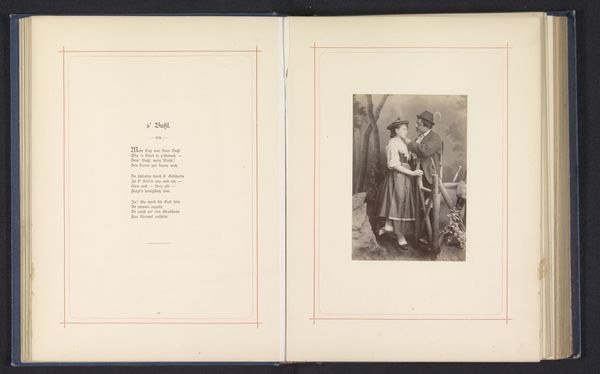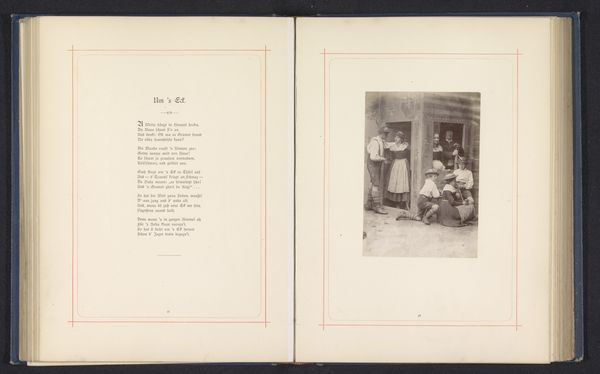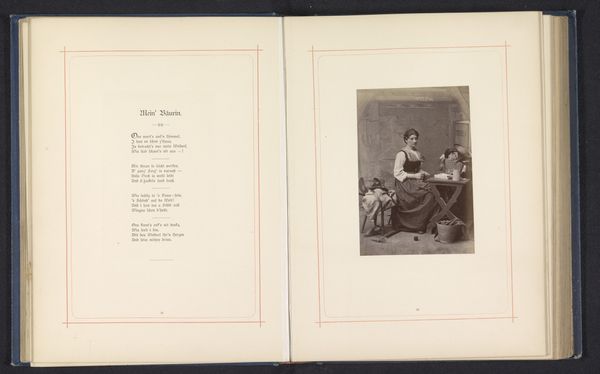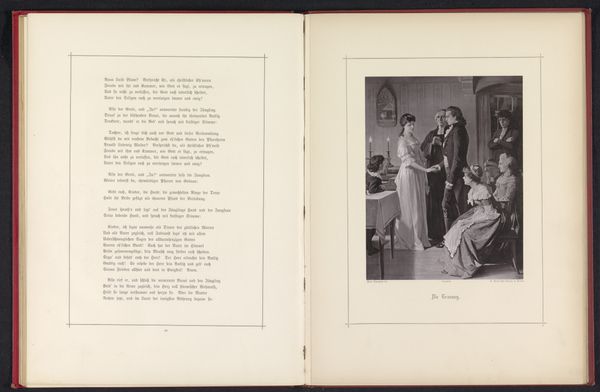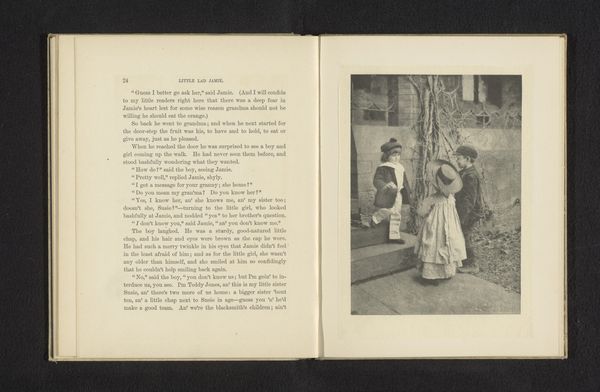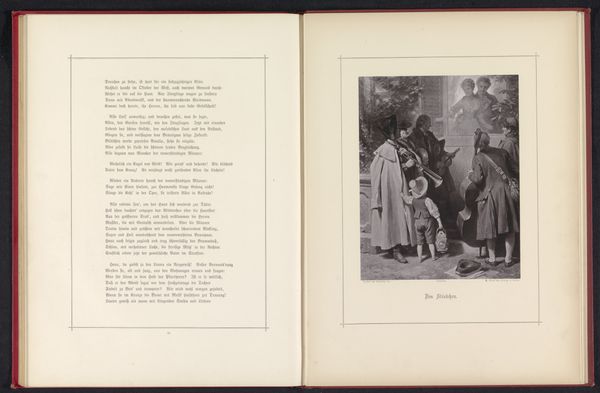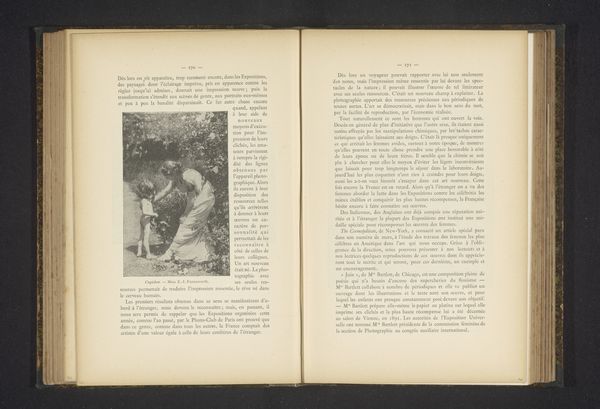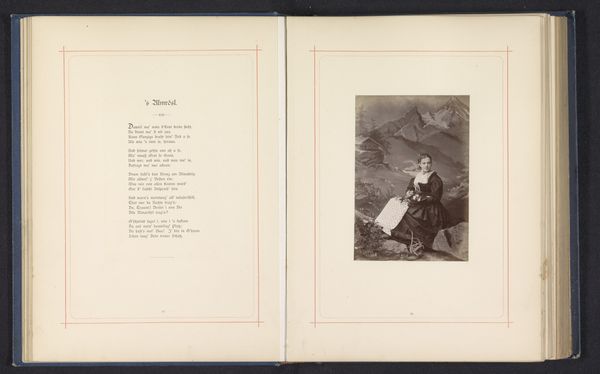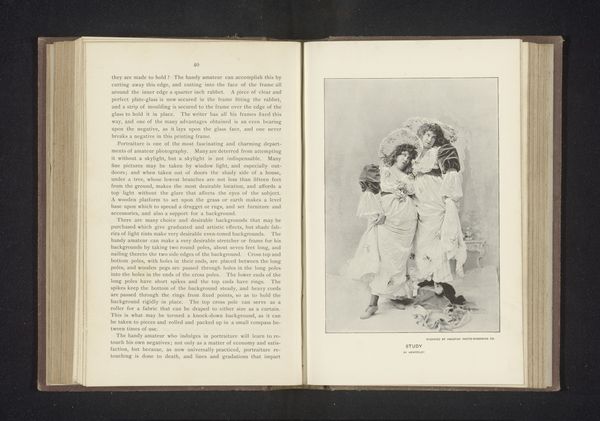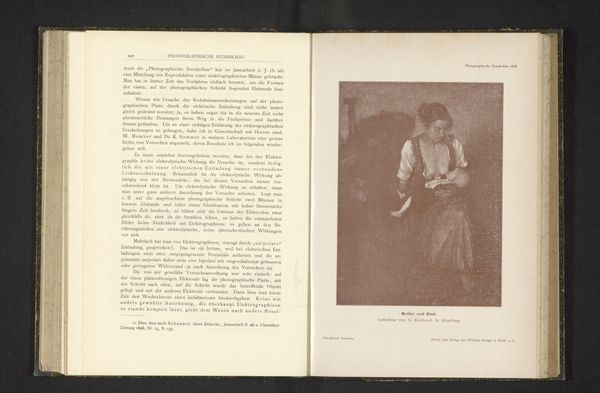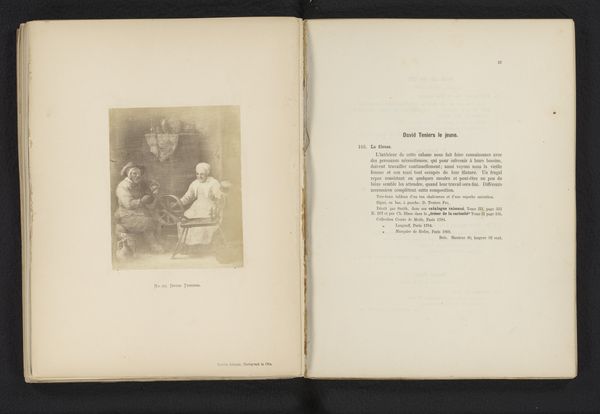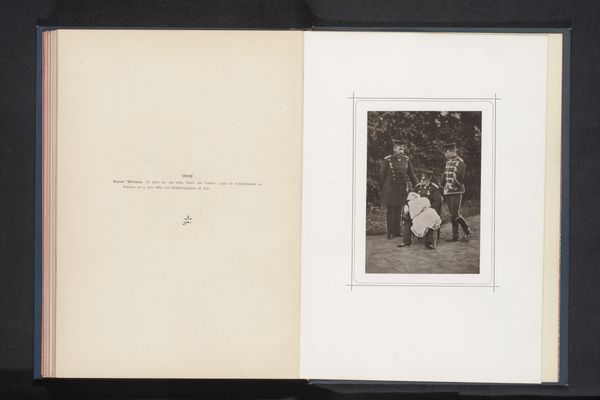
Dimensions: height 128 mm, width 85 mm
Copyright: Rijks Museum: Open Domain
Editor: So, here we have "Man en een vrouw in klederdracht" which translates to "Man and a woman in traditional costume." It's an older photograph, pre-1882, by Max Balde. It's displayed within an album alongside a poem. What's striking to me is how posed and formal it feels, and how that contrasts with the "genre-painting" tag, implying a scene of everyday life. What are your initial thoughts? Curator: What interests me is the materiality of this image, being a photograph. Early photography like this relied on specific chemical processes, laborious printing methods, and particular types of paper. Balde is not only capturing these figures, but engaging with the then-burgeoning industry of photographic reproduction. Is it meant to democratize the image of traditional Dutch culture, or to make it more exclusive, a commodity? Editor: That's a great point. I hadn't considered the social implications of photographic reproduction at that time. So, by capturing these figures in their costumes, the artist is also capturing a specific moment in technological advancement. What is the connection between these subjects in traditional costume and Romanticism? Curator: The Romanticism lies in the fascination with local cultures and the construction of national identities that took place throughout the nineteenth century. Notice the way they are presented, arranged in a scene and emphasizing details in dress. Do you notice how the backdrop seems artificial, further emphasizing the construction and consumption of Dutch identity? Editor: Absolutely, the background is quite blurred, almost like a theatrical backdrop. So it is not an accurate portrayal, it is crafted through the lens of romanticizing Dutch customs and labor practices, almost to promote national identity using the material capabilities of photography. Curator: Exactly! This photograph, through its materiality and production context, reveals more than just a simple portrait. It speaks to larger societal forces at play during the rise of photography, nationalism, and even commodity culture. Editor: This completely reshapes how I see this image. Instead of just a picture, I see all those combined movements influencing even an ordinary photograph. Curator: Precisely, examining the material process helps unravel the social narratives woven into this "simple portrait."
Comments
No comments
Be the first to comment and join the conversation on the ultimate creative platform.
